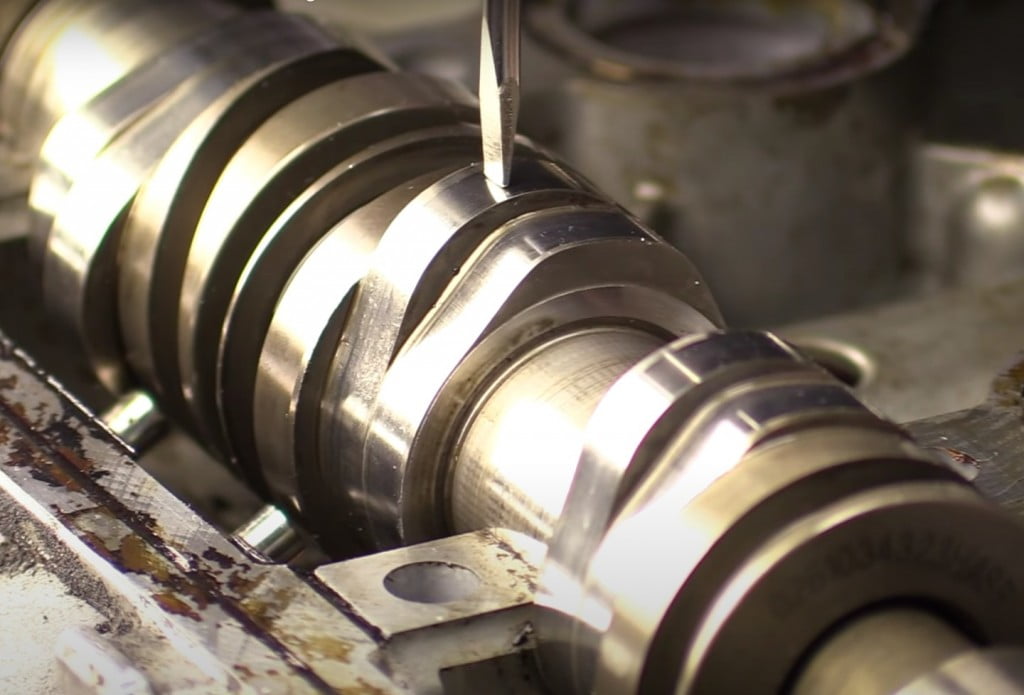In this edition of the Automobile Technology article, we will discuss, in-depth, the function of Variable Valve Timing and Lift. We shall try to see what types of methods are used to achieve this and what effects it has on various parameters of an Internal Combustion Engine. So, without wasting any more time, let us dive straight into the purpose of VVT and VVL.
Also read: Components of exhaust system – What is exhaust scavenging?
Variable Valve Timing and Lift – Purpose
As we have also discussed in our previous automobile technology-related articles, the internal combustion engine works on the four-stroke principle. In this post, we are just concerned about the intake and exhaust stroke. The compression and expansion (power) strokes don’t play any role in VVT or VVL but these will play part in the effects required to achieve from VVT. As the name suggests, the variation in the timing of the intake/exhaust valves is what we want to achieve. Why is this so important?
A plethora of parameters in an internal combustion engine is controlled and altered by the amount of air entering the cylinder of an engine. Any internal combustion engine runs on a stoichiometric ratio. This ratio tells us the amount of air and fuel in the mixture which is burnt to produce power. If the ratio is 1, then enables complete combustion of the air and fuel. If the content of air is higher, it is termed as a lean mixture and if the fuel is more than the air, it is known as a rich mixture. Both these scenarios happen in the operation of the engine. In the case of a rich mixture, there will be more unburnt fuel (hydrocarbons) in the exhaust and will affect the emissions of the engine. On the other hand, with a lean mixture, the higher content of air causes higher CO (carbon monoxide) emissions in the exhaust.
Also read: How does combustion work – Uses of Fuel Injectors and Spark Plugs!
The rich mixture, however, is used to generate more power. If one wants quick acceleration or quick overtake, more fuel and air are injected into the system and more power is achieved. Contrary to this, when one is cruising on the highway and the accelerator pedal is not pinned to the floor, the amount of fuel injected into the cylinder is less as the power is not required suddenly. To control all these scenarios, we need a variable timing of the intake and exhaust valves.
Variable Valve Timing and Lift – Components and Working
With the advancement in automobile technology, it is becoming very common to equip a regular car with VVT technology. The main reason for this is to meet the strict emissions that are becoming even stricter with each passing year. To ensure that an engine doesn’t emit more pollution than allowed, these technologies must be adopted at each level. There is, essentially, a trade-off between power output and emissions. For entry-level cars, this technology is too expensive and hence, these cars are not the best in terms of acceleration and pick up. The VVT requires a specifically designed cam profile. The camshaft is responsible for opening and closing the intake and exhaust valves. Depending on the cam profile, the duration and lift of the intake/exhaust valves are altered. One can easily understand this principle through the video above. The profile of the cam allows the intake/exhaust valve to remain open for a longer duration than usual or the opening/lift will be larger to allow quick and more outflow of the exhaust/intake gases.
Also read: Types of turbo chargers with advantages – VGT, Twin-Turbo, Twin-Scroll, Sequential and E-Turbo!

In modern cars, there are generally at least two intake and two exhaust valves per cylinder. There are plenty of combinations that can be made from this kind of setup. This includes, opening or closing the intake valves early, late or, opening the exhaust valve less or more or a combination of these.
Early/Late Closing of Intake Valves
If the intake valve is closed early, it means that the piston is moving downwards and there will be lesser pumping losses. This is because it is not pulling against the vacuum created in the intake manifold. This happens because, by the time the piston is mid-way to the bottom dead centre, the intake valve has already been closed. There won’t be any suction from the intake manifold. This enhances the overall efficiency of the engine.
Also read: Types of clutches – Wet, dry, single-plate and multi-plate – Pros and Cons!
Similarly, late closing of the intake valve means that the compression stroke has almost already started and the intake valve is still open. This is done in order to control temperatures inside the cylinder. Being a bit cooler increases the efficiency and reduces the NOx emission as NOx is dependent heavily on the temperatures inside the cylinder.
Exhaust Valve Lift
In the case of the exhaust valves, the purpose of it is to remove the exhaust gases from the cylinder. The variable valve lift means that the area through which the gases leave the cylinder will increase or decrease. If the engine is running fast at high RPMs and we need to get rid of the exhaust gases faster, then the lift will be large to allow the quick escape of the exhaust gases out from the cylinder. During low RPMs, however, a small area is sufficient and it causes the gases to escape quickly as well because of increased velocity due to the small area. Depending upon the situation the car/engine finds itself in, the ECU (Engine Control Unit) senses the requirement and sends out a signal to alter the duration or lift of the intake or exhaust valves to improve efficiency in every situation.
Also read: All you need to known about 4WD and AWD – What is a Differential?
Variable Valve Timing and Lift – Effects
With the help of variable valve control, all the parameters related to the engine can be controlled easily. There is a lot of flexibility when the intake, as well as, exhaust valves can be controlled in so many ways. The air-fuel mixture inside the cylinder determines all the necessary aspects of a car, for example, the exhaust gas emissions, power and torque outputs, thermal efficiency and conditions of the components, fuel consumption, turbocharging, exhaust gas recirculation and much more. The key is to strike a balance between all these aspects so that a vehicle performs well in every situation. That is what people generally change in engine remapping. They alter these aspects to either make the performance of their cars increase a lot or decrease the fuel consumption of the vehicle. Either way, there has to be a compromise on some aspects because the car manufacturers balance out all the aspects from the start. If you change one aspect, it will come at the cost of another parameter.
Also read: What is Gasoline Direct Injection – Why is it relevant in modern engines!
We hope you got to learn and understand the concept of variable valve timing and lift which is found in most modern cars. The examples are Honda’s i-VTec Engines, Hyundai’s VTVT engines, Maruti’s VVT Engines and a lot more.
Also read: Types of suspension setups – MacPherson Strut, Double Wishbone, Leaf Spring!


